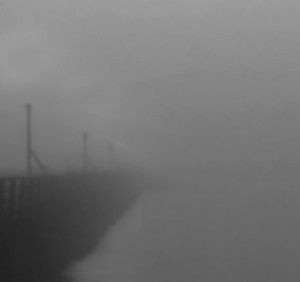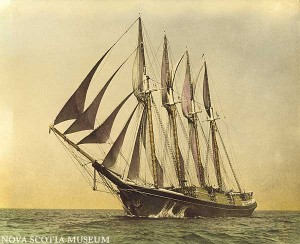shipwreck
 I awoke that rainy morning to the rumbles of thunder. From my upstairs bedroom on Kent Island, I could hear the long low blasts of foghorns as big ships passed beneath the Chesapeake Bay Bridge. They sounded eerily closer than usual this morning at 4:00 AM. I listened to the ships until it was apparent that I wouldn’t go back to sleep. I haven’t been fishing as much as I like to. My only opportunities have been in the early mornings before work, and often in less than optimum conditions.
I awoke that rainy morning to the rumbles of thunder. From my upstairs bedroom on Kent Island, I could hear the long low blasts of foghorns as big ships passed beneath the Chesapeake Bay Bridge. They sounded eerily closer than usual this morning at 4:00 AM. I listened to the ships until it was apparent that I wouldn’t go back to sleep. I haven’t been fishing as much as I like to. My only opportunities have been in the early mornings before work, and often in less than optimum conditions.
This morning, despite the dreadful weather, I decided to make the best of the time I had available. I call my boat Thunder Road. The name is homage to the 1950’s song and movie by Robert Mitchum, but also because the Eastern Shore-built Judge 27CC is well suited to difficult weather conditions just like this mornings. I grabbed my phone, put on some rain gear, and backed the boat out of the driveway.
It was pitch black when I arrived at the Matapeake boat ramp. Oddly, the lights were out on the pier. It wasn’t windy, and a dense fog had set in. I launched into the dark water and idled slowly toward the mouth of the inlet without the lights of my sonar or GPS so I wouldn’t destroy what little night vision I had. The fog was so thick I could barely see past the front of my boat. I wiped my glasses and breathed a sigh of relief as I slipped between the end of the wooden pilings and the rock jetty. I was surprised to look up and see the shadow of a lone figure standing at the end of the pier. Another hardcore fisherman I thought, but then I noticed he didn’t have a fishing rod. My wave wasn’t returned as I continued out into the murky open waters of the Chesapeake. There was a cold chill in the air, so I pulled up my hood and swung the bow north into a strong outgoing tide.
 At 7:00 PM on the evening of March 15th, 1912, the four-masted schooner Herbert D. Maxwell left her anchorage near the mouth of the Magothy River and sailed southeast across the Chesapeake Bay toward Kent Island. Built in Maine and designed to haul lumber, the 186 foot cargo ship carried 1150 tons of fertilizer from Baltimore bound for Wilmington, North Carolina. At her helm was her captain and master, William Quillan accompanied by his brother Elay and first mate J.C. Scott. She carried an additional crew of six deck hands. Since winds were mostly calm, it had been slow going down the Chesapeake. After a drowsy sail to just south of Sandy Point, the wind completely died causing Captain Quillan to drop anchor once again. The crew slept until roused by a building northeast breeze at 3:00 AM. Quillan gave the order to the mate to get underway. After pulling anchor and setting sail, The Maxwell ran under clear skies before a 15-knot wind for about 40 minutes when her lookout made an ominous call, “Lights of a steamer, dead-on ahead!” Three minutes later, at 4:44 AM on March 16th, the wooden schooner was ripped apart by the 3200-ton northbound steamship S.S. Gloucester. She sank quickly carrying the first mate and three other crew members to their deaths. Read More!
At 7:00 PM on the evening of March 15th, 1912, the four-masted schooner Herbert D. Maxwell left her anchorage near the mouth of the Magothy River and sailed southeast across the Chesapeake Bay toward Kent Island. Built in Maine and designed to haul lumber, the 186 foot cargo ship carried 1150 tons of fertilizer from Baltimore bound for Wilmington, North Carolina. At her helm was her captain and master, William Quillan accompanied by his brother Elay and first mate J.C. Scott. She carried an additional crew of six deck hands. Since winds were mostly calm, it had been slow going down the Chesapeake. After a drowsy sail to just south of Sandy Point, the wind completely died causing Captain Quillan to drop anchor once again. The crew slept until roused by a building northeast breeze at 3:00 AM. Quillan gave the order to the mate to get underway. After pulling anchor and setting sail, The Maxwell ran under clear skies before a 15-knot wind for about 40 minutes when her lookout made an ominous call, “Lights of a steamer, dead-on ahead!” Three minutes later, at 4:44 AM on March 16th, the wooden schooner was ripped apart by the 3200-ton northbound steamship S.S. Gloucester. She sank quickly carrying the first mate and three other crew members to their deaths. Read More!


